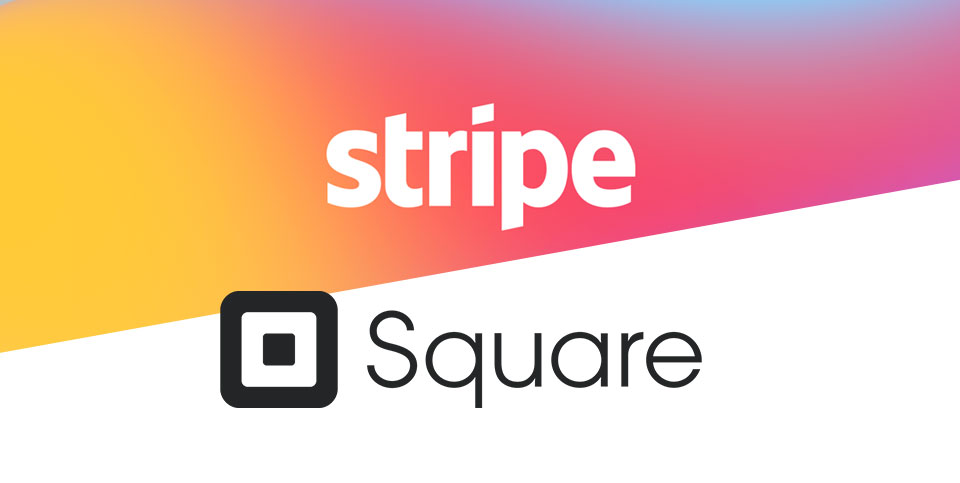As a small business owner, you look for the best value with each tool you bring into your operation, and payment processing is no exception. This guide compares Stripe vs Square, two of the most popular payment processors. These giants set the bar for online and in-person transactions, and their hardware options will satisfy most, if not all, your needs.
What fun would a comparison be without competition? To determine the winner, we’ll assign points for each of the categories below. Let’s dive in.
- Features
- User-Friendliness
- Transactions Online
- In-Person Transactions
- Integrations
- Security
- Setup
- Pricing
- Summary
Related: Everything You Need To Know About Payment Processing
Stripe vs Square Features Overview
Stripe and Square are packed with features and innovations. They’ve been around for some time and while each offers in-person and ecommerce solutions, they take different approaches to providing businesses the payment processing options they need.
Ideal Customers for Square & Stripe
While both offer POS and ecommerce solutions, Stripe offers much more flexibility for online transactions. And while Stripe provides support for POS transactions, the hardware they offer is significantly limited compared to Square.
Less hardware means fewer options for storefronts, restaurants, and other physical locations.
Square specializes in physical sales locations, but they make it easy to include ecommerce if businesses need it. Their POS systems are second to none and there’s a reason you’ll see them anywhere from farmer’s markets to restaurants.
Free Merchant Account
Stripe and Square are popular because their customers face less regulation and their accounts require little to get started. They accomplish this by offering their services as third-party payment processors. In short, you don’t own the merchant account when you work with them.
As a result, their month-to-month agreements make the most sense for small businesses with a lower transaction volume.
Stripe and Square are more similar than not. But depending on how you accept payments, the different philosophies can cause savings on fees or more support for specific forms of payment.
Related: The Best Free Merchant Account for Your Business
Payment Processing
Stripe provides a more comprehensive offering when accepting different methods of payment, particularly online. With Stripe, you’ll receive access to ACH, local payment, Apple Pay, and other mobile wallet options.
Stripe also provides international support for an additional fee. This access enhances your range of options for receiving payments and could improve the customer experience. If you’re working with international clients or customers online, Stripe is your best choice.
Square is focused on card payments and physical in-person transactions. You have the option of adding support for mobile wallets, but it won’t support as many features as Stripe. You also miss out on accepting foreign cards and methods of payment, which could affect who you can do business with.
Customization
Stripe is your configuration-based provider. You can dissect and customize features as you see fit. They won’t fret if you need to do things your way. For the technical-minded, Stripe is incredible because their technical docs are thorough and best-in-class.
Square is your convention-based tool. They’ve set things up their way so you can hit the ground running. This is great, but if you need customization down the road, it’s a little more difficult to break away and set up things as you need them.
| Feature | Stripe | Square |
|---|---|---|
| Partial Payments | ||
| Subscription Billing | ||
| Sales Reporting | ||
| Invoices | ||
| 3rd Party Integration | ||
| API | ||
| Customizable Reporting | ||
| Free Trial | ||
| Great Customer Service | ||
| Multi-Currency |
Features Overview Verdict
Stripe gets the point here for having more flexibility in accepting payments and providing support for a broader range of transactions. Stripe also has more customizability for implementation, with great documentation to support technical and specific use cases.
Stripe – 1, Square – 0
Square & Stripe User-Friendliness
As far as comparisons go, Stripe and Square are at two different ends of the user-friendly scale.
Stripe is lauded for its developer-first, feature-rich platform. The overarching philosophy behind Stripe was to create payment processing that integrates deeply with your current business model. The result is complexity. Lots of it.
It’s not to say Stripes flexibility isn’t great, but if you aren’t tech-forward, or versed in programming, Stripe could be difficult to start with.
Despite Stripe having some plug-and-play implementation, you might have a setting or two that’ll need technical expertise which adds complexity from the start. Once everything is up and running, Stripe is user-friendly enough for day-to-day use.
Square leaves no room for comparison here. The philosophy behind Square’s offering is simplicity. Every piece of hardware, software, POS device, works in harmony and delivers data to a centralized hub.
Everything within Square feels intuitive and easy to use. No frills or additional customization needed. Once you get going, you’re going and there are no real barriers to stop you from continuing your business.
User-Friendliness Verdict
If you’re looking for a simple and straightforward offering, Square takes this one by a fair margin.
Stripe – 1, Square – 1
Online Payments with Square & Stripe
Stripe is regarded as the ecommerce version of Square. Its strength lies in its wide support for international transactions. With availability in just over 40 countries, if you’re an international ecommerce platform, Stripe is the answer for you.
Stripe also offers hundreds of integrations with ecommerce platforms, and if there isn’t an integration available, you can always build one.
Square offers ecommerce solutions as well but lacks international transaction support. If you’re working with clients overseas through your online store, you might not be able to take their payments through Square.
A great bonus feature within Square is their Online Checkout capability. This feature rivals the flexibility of PayPal’s solutions and allows you to create payment links and buttons that may be added to emails, landing pages, texts, and other formats.
Online Payments Verdict
Again, it’s close, but Stripe takes this one. With their international support, and reputation as an ecommerce forward processor, Stripe has you covered.
Stripe – 2, Square – 1
In-Person Transactions
Square is known for their in-person solutions, and many consider POS to be their specialty. The sheer amount of hardware options they have, and the powerful, free Square POS go a long way in cementing their rank at the top.
Pair these features with the centralized software suite and you can’t go wrong with Square for your POS.
Square Hardware Options
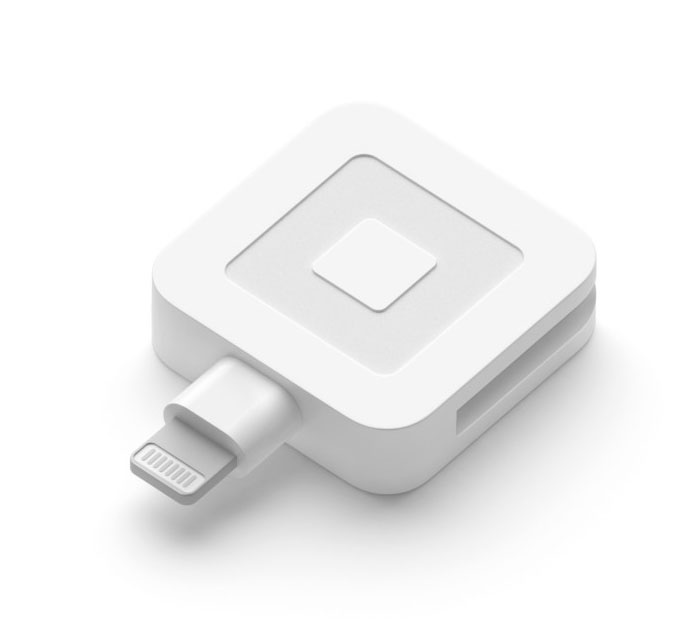
Square Magstripe Reader
Ubiquitous. We’ve all seen one before. Square offers the first one free, and each additional is only $10. This little giant is great for swiping credit cards on your phone or tablet, but won’t handle any other payment types.
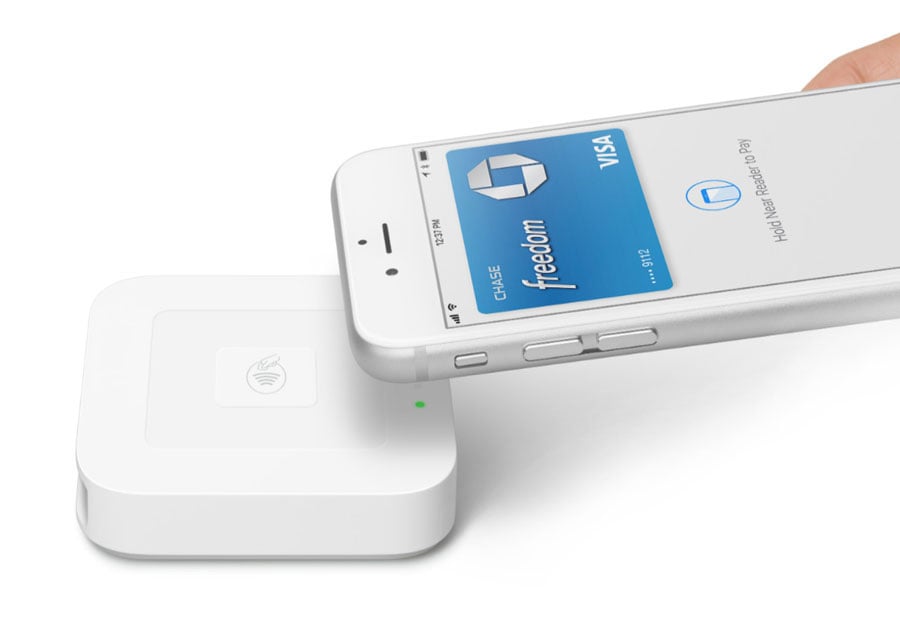
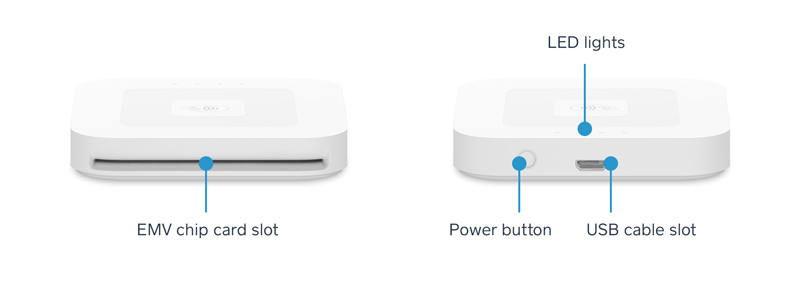
Square Contactless + Chip Reader
If you’re looking to accept Apple Pay, chip, and contactless cards, you’ll need this hardware from Square. It’s a straightforward way to accept payments. You can place it on your counter or carry it with you as needed.
The cost for the Square Reader is $49. Keep in mind you won’t be able to swipe cards with this reader.
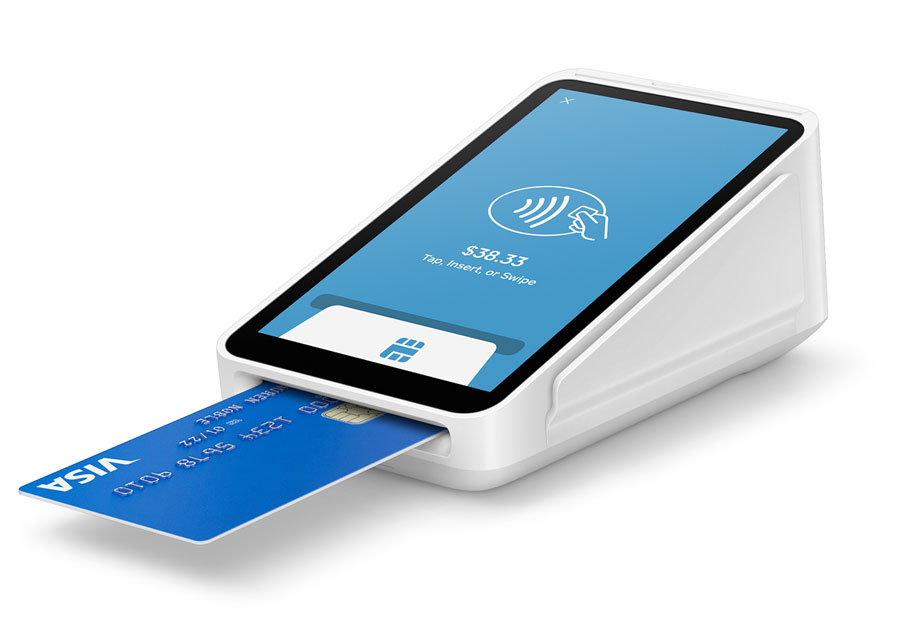
Square Terminal
Square Terminal represents the ultimate in simple card readers. The Square Terminal has a touchscreen and accepts contactless, Apple Pay, card, and swipe transactions. It’s reliable and lauded for its clean look. You can’t go wrong with this terminal if you’re a Square user, as it’s the perfect all-in-one option.
The Square Terminal may be purchased for $299 or 12 payments of $27 per month.
And so many more…
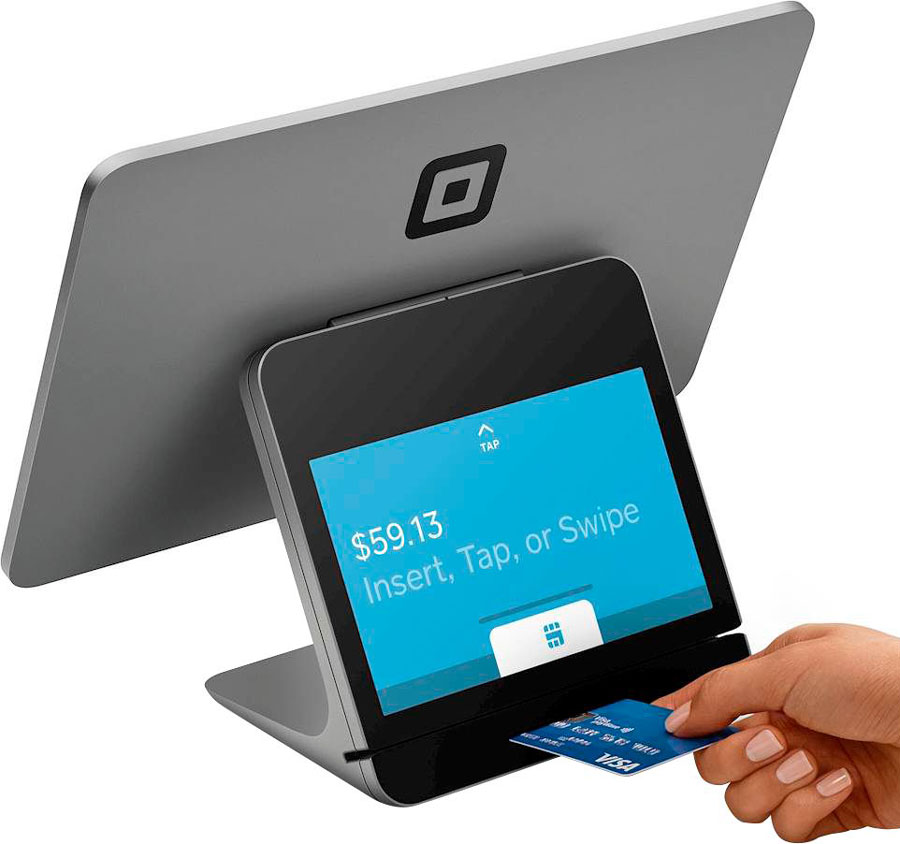
It’s worth mentioning that Square has even more to offer on the hardware front. With options for every business type, we could go on for another article about Square’s diverse catalog. Keep in mind that Square is the king of POS. You won’t go wrong with them if you accept in-person payments.
Stripe Hardware Options
Stripe isn’t as well known for POS solutions, but they provide support through Stripe Terminal. This works great if you’re in Stripe’s ecosystem and need to expand to in-person transactions. As with every other tool in Stripe’s offering, you’ll have access to developer tools to integrate Stripe with POS apps.
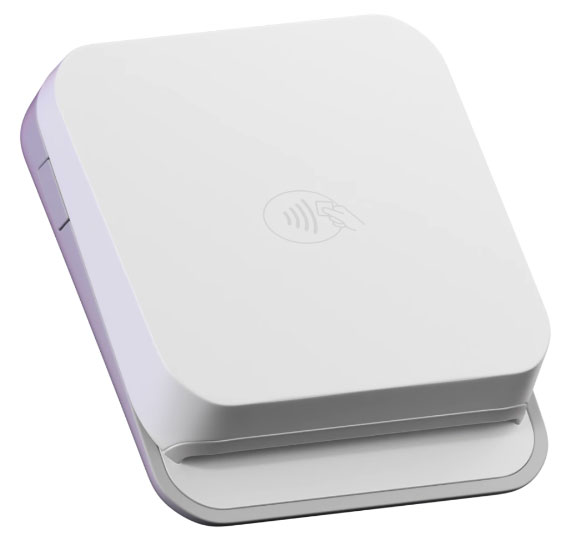
Stripe Reader M2
This terminal is fast, secure, and battery-operated. It accepts EMV chip, contactless, and swipe payments and connects via Bluetooth for use with your devices.
The total cost of the Stripe Reader M2 is $59, and it’s available with an optional cradle and tablet mount.
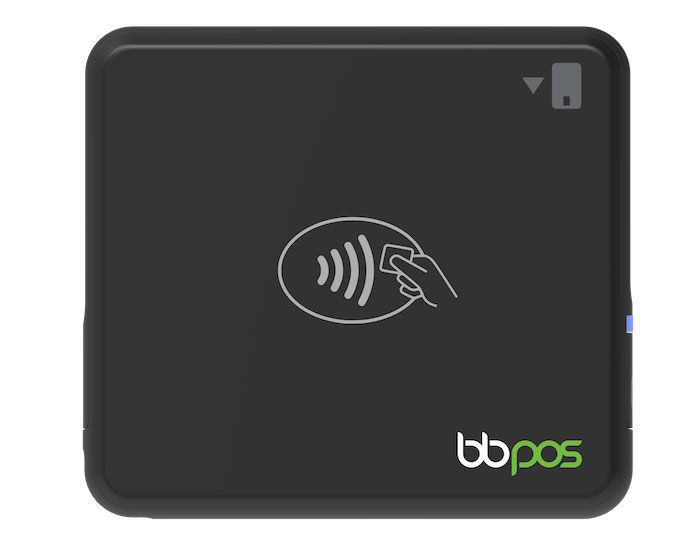
BBPOS Chipper 2X BT
This pre-certified card reader is available as a third-party option for Stripe users. It’s battery-powered and accepts EMV, contactless, and swipe payments.
The Chipper 2X BT is available for $59.
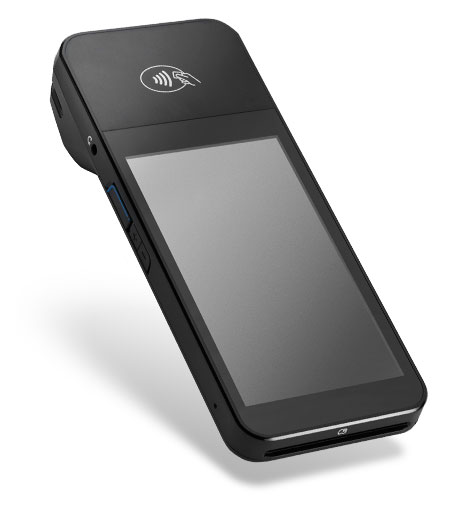
BBPOS WisePOS E
This smart reader has a 5-inch touchscreen display and is ideal for hybrid countertop and handheld use cases. Designed for both plugged in and on the go use, this reader accepts EMV, contactless, and swipe payments. The WisePOS E comes with Wi-Fi connectivity as an option and features an optional ethernet dock.
The WisePOS E is available for $249.
In-Person Transaction Verdict
There’s little competition here. Square is the clear winner with tons of hardware to choose from and a philosophy geared toward physical transactions. Stripe doesn’t have anywhere near the same amount of hardware options.
Stripe – 2, Square – 2
Payment Processing Integrations
Integrations are important as they determine how your payment processor will fit in with your current technology and how long it’ll take to get rolling. Both Square and Stripe have extensive integrations, but both approach them in different ways.
Square has the overall lead in integrations with thousands in their marketplace and hundreds of big-name payment processing partners. Whichever provider you currently work with, you’re likely to find in the Square App Marketplace.
Stripe has an impressive number of payment processing integrations as well, but if there isn’t one available for your use case, you’re in luck. You (or a Stripe developer), can build an integration for your use case.
Integrations Verdict
Where one continues to build on their integration offering, the other provides developer-centric tools. You’re likely to find most of the integration power you need with both providers. It’s a tie here.
Stripe – 3, Square – 3
Stripe vs Square Security
Both Stripe and Square are PCI compliant at the highest level possible. Your data and transactions are secure with each provider and this extends from the point of sale through any hardware you use.
Stripe uses HTTPS and HSTS for secure connections from their public website through their user dashboard. Besides compliance, and end-to-end encryption, Stripe offers a vulnerability disclosure and reward program. If a bug is found, it’s reported immediately. Another helpful step in place to mitigate vulnerabilities.
Square offers end-to-end encryption on their hardware out of the box. They also offer secure connectivity through every part of their app, so sensitive information is kept safe.
Security Verdict
Both Stripe and Square are heavy hitters in the security space, handling millions of transactions per year. This one is a tie.
Stripe – 4, Square – 4
Setup
Square’s setup is seamless and straightforward. Select your hardware of choice, install Square’s free app, input required information, verify your setup and you’re ready. They built everything on a centralized system, so as you add more hardware, you can sync it up with your dashboard and you’re good to go.
Stripe, on the other hand, is complex. Integration and setup are involved processes. If you’re not technically inclined, you might have a harder time setting up the finer points of your Stripe implementation.
Setup Verdict
Square takes the cake on setup. With Square, it’s quick, painless, and seamless. Once setup is complete, you’re good to go.
Stripe – 4, Square – 5
Pricing
A huge benefit of working with either of these processors is that pricing is straightforward. Barring the occasional special situation, what you see is what you get.
| Stripe | Square | |
|---|---|---|
| Online Transactions | 2.9% + 30¢ | 2.9% + 30¢ |
| In-Person Transactions | 2.7% + 5¢ | 2.6% + 10¢ |
| Bank Transfer / ACH | 0.8% ($5 maximum) | 1% ($1 minimum) |
| Chargeback Fees | $15 | None |
Stripe Add-On Pricing
| Additional Methods | Starts at 80¢ per transaction |
| Instant Payouts | 1% (50¢ minimum) |
| Recurring Billing | Starts at 0.5% |
| Invoicing | First 25 are free, then 0.4% |
| Automatic Tax Calculation | 0.5% per transaction |
| Revenue Recognition | 0.25% of transaction volume |
| Radar (Fraud Protection) | 5¢ per transaction (Included with standard 2.9% + 30¢ pricing) |
| Radar for Fraud Teams | 7¢ per screened transaction |
| Chargeback Protection | 0.4% per transaction |
| Premium Customer Support | Starting at $1,800 per month |
Square and Stripe both offer their dashboard, reporting, analytics, and payouts for free.
If you process more than $250,000 per year with an average ticket size under $15, you’ll qualify for Square’s custom pricing and should speak with one of their specialists to determine the rate.
Pricing Verdict
All said, both providers offer similar enough pricing that a clear winner is hard to decide on. This category is a tie as well.
Stripe – 5, Square – 6
The Winner is…
Square! With a total score of 6.
Stripe and Square are both experts in payment processing. Square inched away with an additional point for user-friendliness and their superior POS offering. In both areas, Square outshines everyone.
Quick Summary
Stripe
Despite coming in behind, Stripe is a solid and reliable processor for those looking for ecommerce options. With the near-infinite amount of customization available, there’s an implementation of Stripe for every use case.
| Stripe Pros | Stripe Cons |
|---|---|
| Great Documentation | Limited Hardware Options |
| International Support | No POS for In-Person |
| Multi-Currency Support | May Require Developer |
Square
On most days, it feels like Square is everywhere you turn, and for good reason. They’re a strong contender for brick-and-mortar use cases. With endless hardware options, there are variations of terminals for every business type out there.
| Square Pros | Square Cons |
|---|---|
| Industry Leading POS System | Limited International Support |
| Very Easy to Use | Limited Ecommerce Flexibility |
Choose Square as your payment solution if…
You’re looking for an easy-to-use and comprehensive POS solution. Square has it all for coffee shops, restaurants, retail storefronts, farmers market merchants, and pretty much every type of business.
Stripe is the solution if…
You’re building an eCommerce business that sells and ships overseas. Stripe offers multi-currency support and more options for accepting payment types, so it’s easier to get going and keep business open with international clients.
